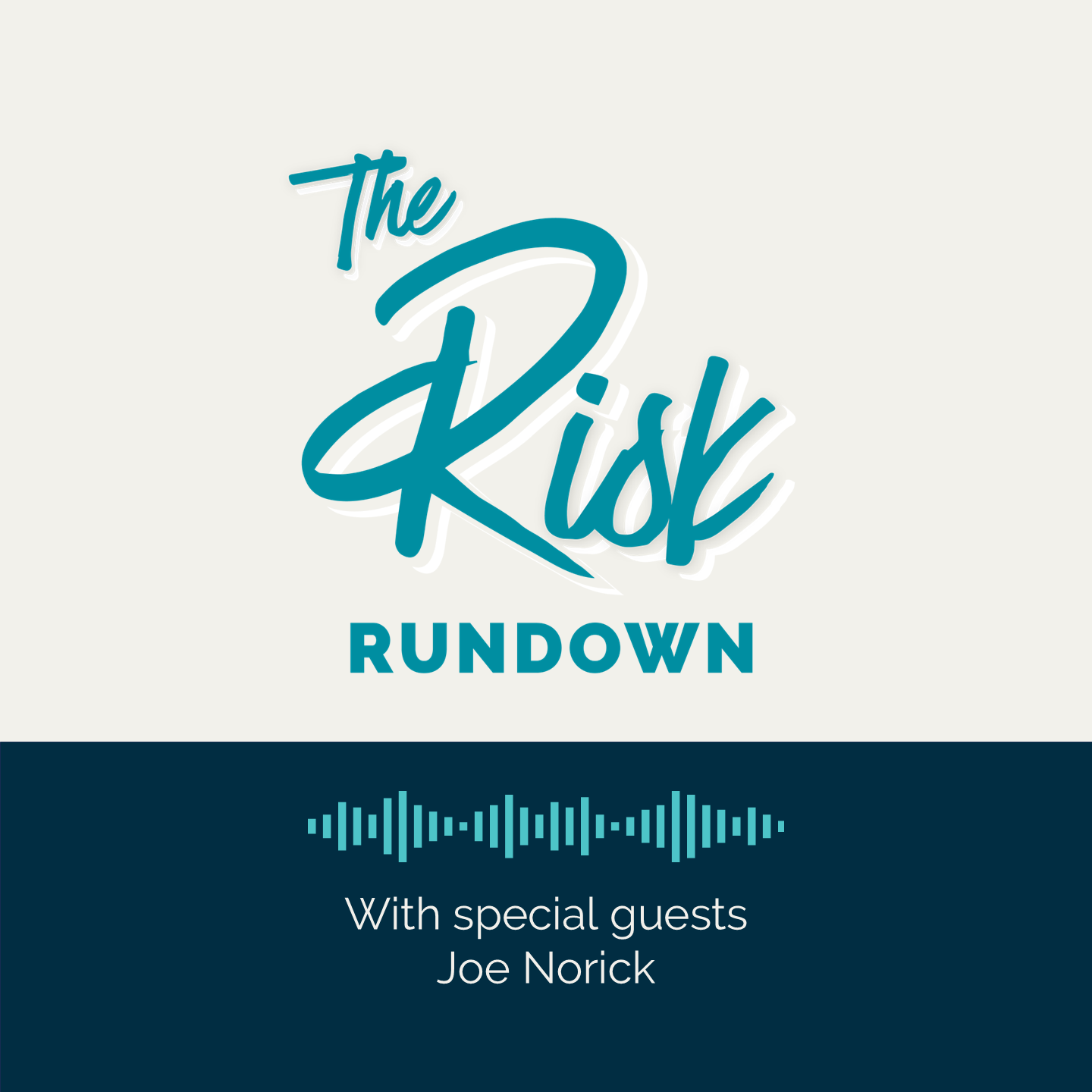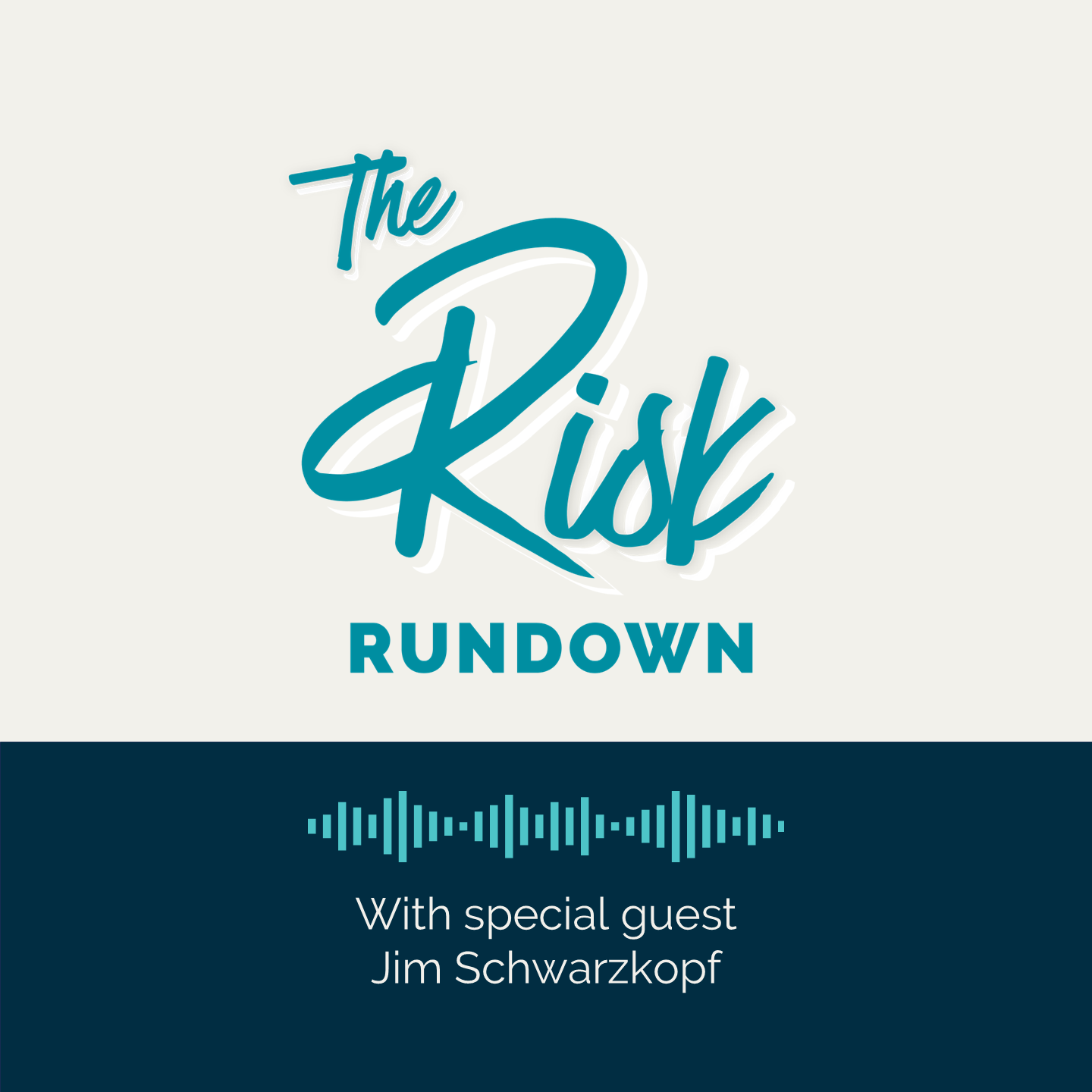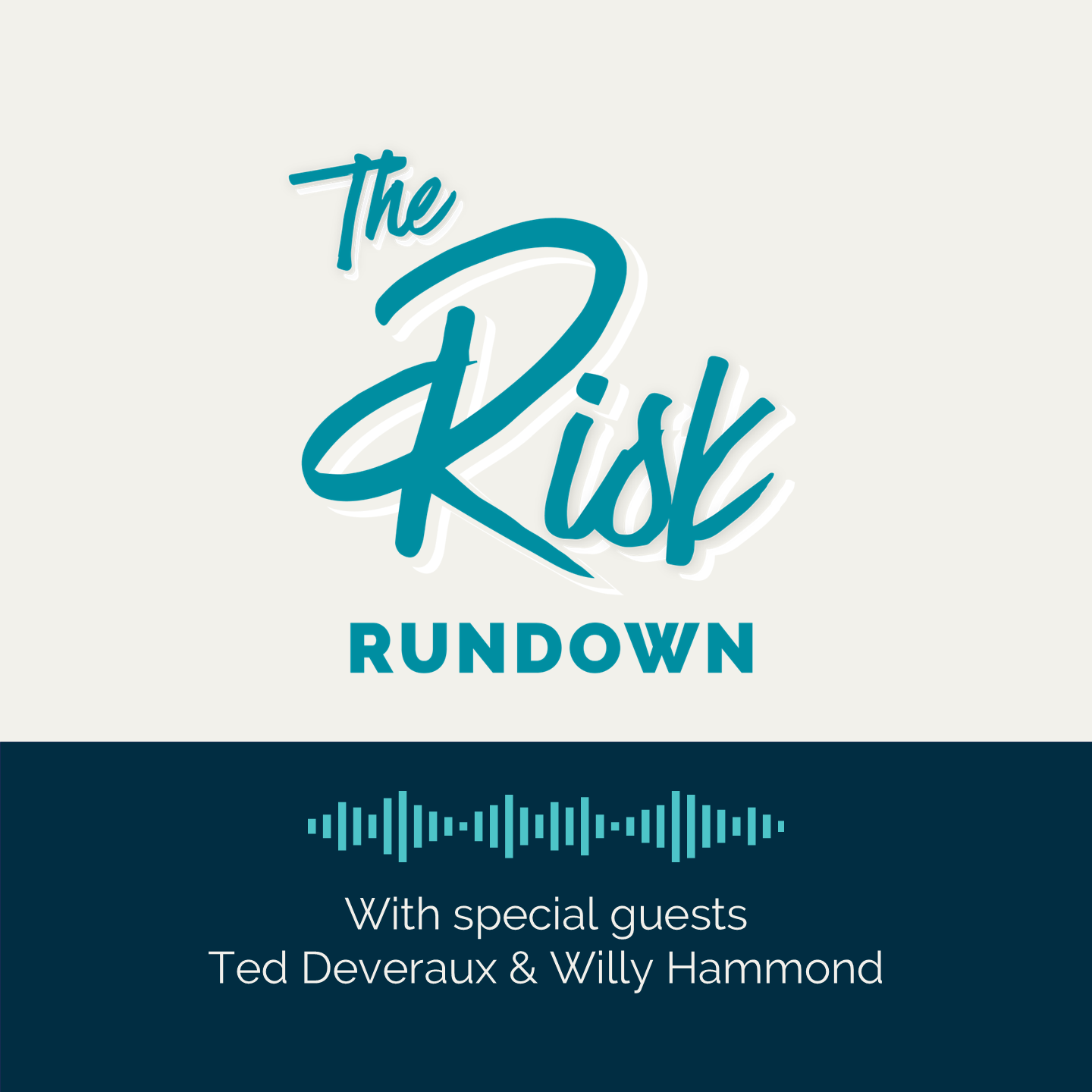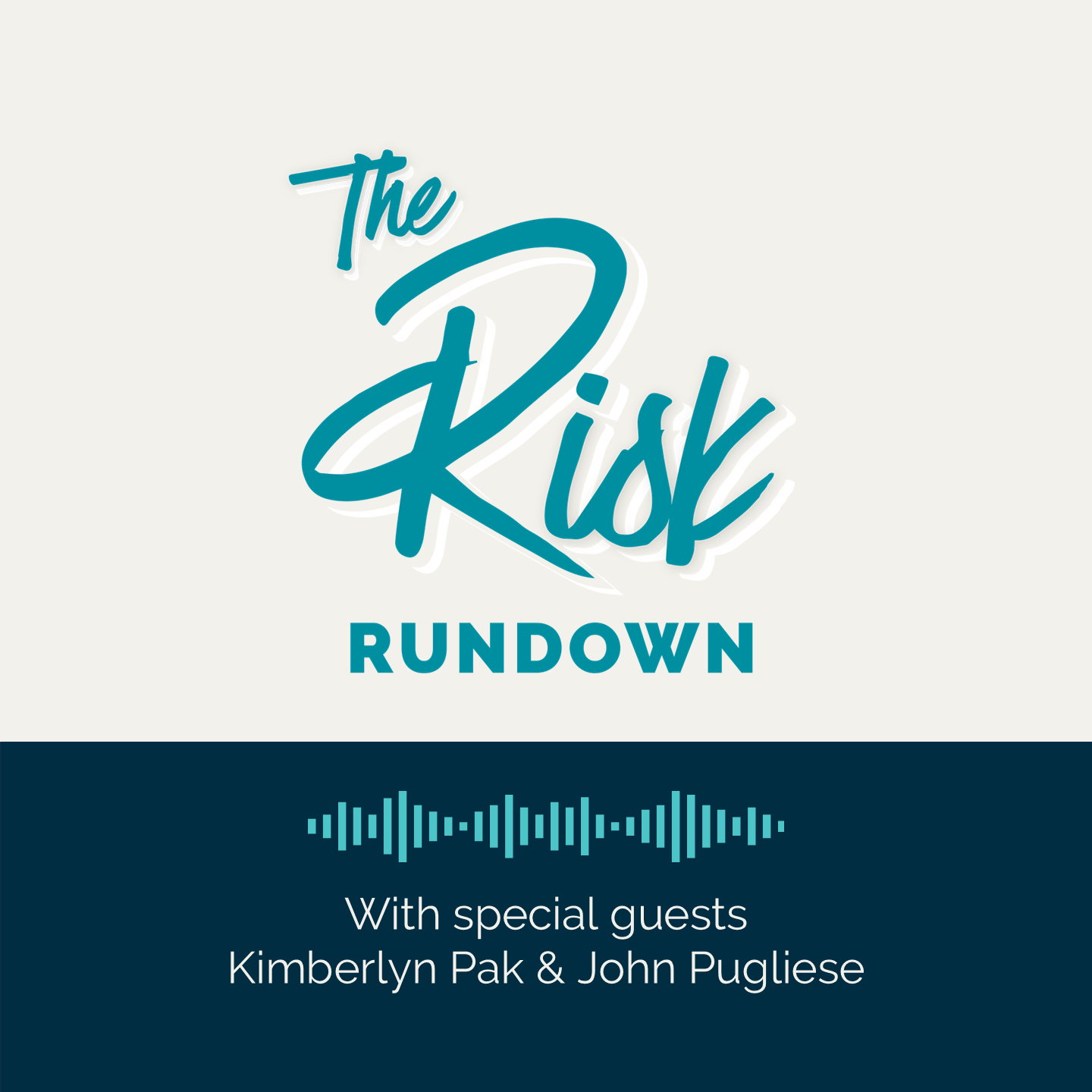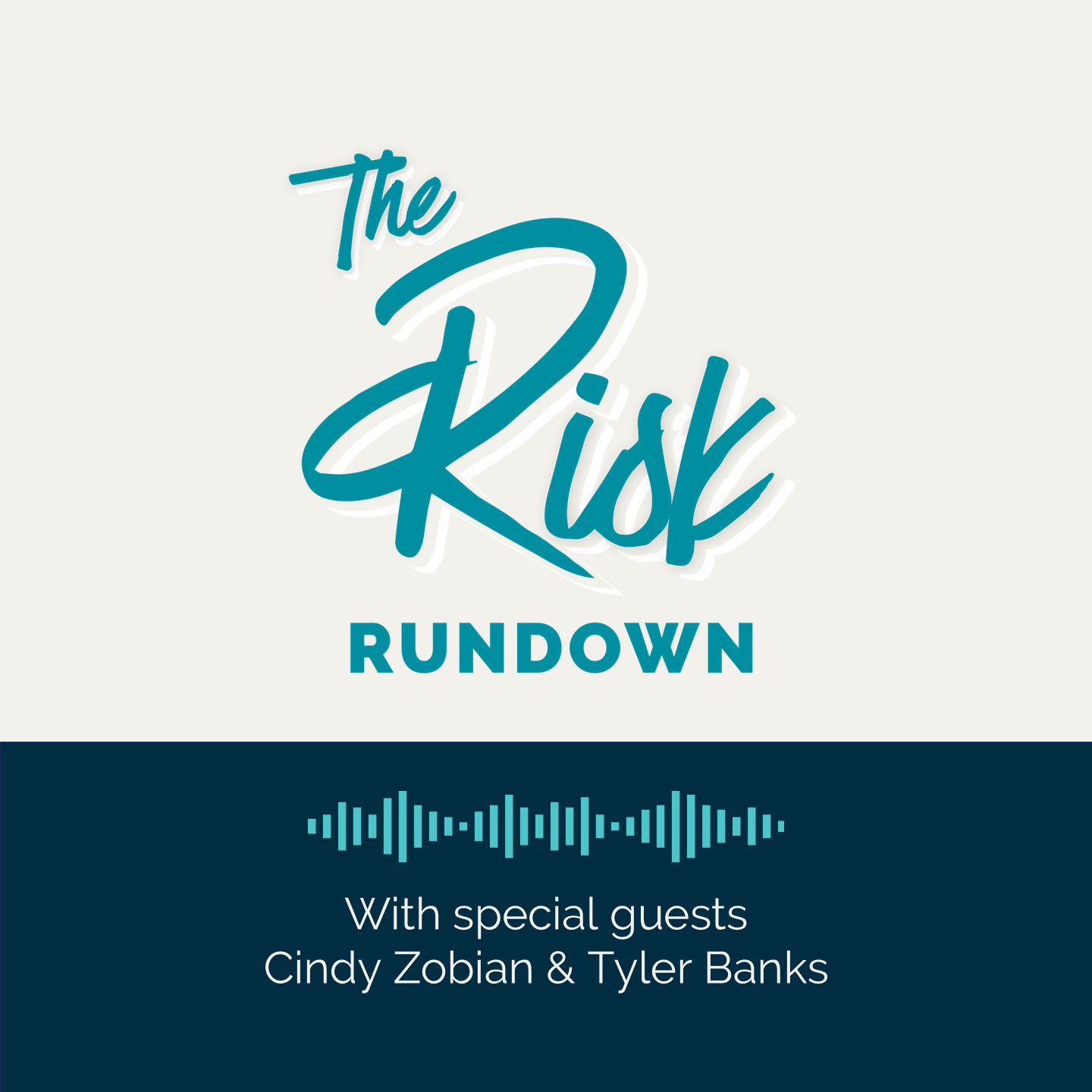Myths vs. Truths: Hurricane Edition
Host Julie Rison sits down with Ted Deveraux and Willy Hammond, Alliant Private Client’s in-house risk mitigation experts, to separate hurricane myths from reality. From essential pre-storm preparations to safeguarding high-value homes, vehicles, and assets, they’ll dive deep into the myths versus realities of hurricane preparedness. With expert insights, they’ll debunk common misconceptions that could expose homeowners to unnecessary risks.
Julie (00:25)
Ted Deveraux and Willy Hammond, thank you so much for joining me on The Risk Rundown Podcast. You two, I have dubbed you all a new title. So just listen—just stick with me. You all are Alliant Private Client’s, “In-House, Everything-Risk-Mitigation-Experts”. Try putting that on a business card, right?
Ted (00:30)
Right.
Willy (00:30)
Dot com. Perfect.
Julie (00:31)
You're welcome.
But no, in all seriousness, thank you so much. You all have been very busy for the past year, right? I mean, we keep you very busy on anything risk mitigation. And today's topic is going to be natural disasters. And we're going to talk about myths versus truth. And it's going to be the hurricane edition.
So I know that this is going to be specifically about hurricanes. But I do want to preface for our viewers that the strategies and the concepts of preparedness and kind of everything that we're going to be talking about today can translate into a lot of different scenarios, right? And a lot of different disasters.
So, with that being said, I'm going to just throw out some statements and I'm going to ask you all to say “myth or truth”. Debunk it if it's a myth. Maybe it might be a little hybrid of both. But I want to get your all's pro, expert opinions on the statements. Are you ready? Okay?
Willy (01:34)
Yes.
Ted (01:34)
Yes.
Julie (01:35)
I feel like a game show host.
Willy (01:35)
Perfect.
Julie (01:37)
All right. So the first one is: “Don't worry, I don't have to worry about my property, my cars, my family. I don't need to prepare for that kind of stuff right now because that's why they give hurricane warnings. I have plenty of time.”
Ted (01:51)
Right.
Julie (01:52)
Go.
Ted (01:54)
That's very much a myth.
Julie (01:57)
Right? Okay. Tell me why.
Ted (01:59)
So, you want to be able to prepare and practice. So one of the things of preparation is prepare before you need to prepare. Prepare before they come on the screen and say, hey, there's a hurricane seven days out. That's not when you want to prepare. You want to prepare in the off season when you can go through and check to see what you have in your go bag. What checklists you have. What your different evacuation routes are. Because, if you wait till they come on TV and say, hey, it's time to prepare, that's when everybody else as well is gonna be preparing.
Julie (02:36)
So that's when the generators are low and you can't find one, and everything else? Is that what you're saying?
Willy (02:40)
Yeah, exactly. Exactly what Ted said. You know, that's if you wait till this, you know, the picture of the storm comes up and it's however many days out, that's the horrors that you see of, you know, 500 cars waiting at the only gas station to fill up your generator. Right?
And the other problem is, and we've seen it in the past, is—if you run into a house with a flat roof, you run into a house that has gutters— if you're trying to out there and clear your gutters the day of the storm or three days before the storm and you run into a problem, now there's nothing you could do. So the off season, early in the season, June, May, April.
Are your gutters clear? Is your storm drains clear? Is anything you could do? So by all means, that is a crazy myth. The bigger the estate, the larger the property, the more preparation—and you probably have people that have a you know, it's not just one person trying to evacuate this house or get it ready. You need to have a plan for your staff. Who's doing what, who's doing where, and who's responsibility for all the different pieces by all means.
Julie (03:54)
What would you say for people that say, you know, that's all great, but my house is a brand new house. And it has all of the hurricane resistant glass, and it has all of the, you know, the hip roof and the different types of things that I need to have physically for it to sustain a hurricane.
I mean, what would you say to those people that they don't really have as much to prepare for because they have a newer home?
Willy (04:23)
Yeah, I mean, I would say that's a complete myth as well. I mean, yes, they don't have to go out there and install shutters. So, you know, that's a huge advantage because the windows are meant to withstand the storm. But the minute you neglect your landscaping and you have a palm tree, for example, land on your house or fall on your house, doesn't matter how good it is. If it breaks a window, now your house is compromised and it's going to be just as bad as if, you know if it didn't have the impact glass in the new construction.
You know, it starts, like Ted said, it starts in the off season. Is the landscaping secure? Do you have trees? Do you have dead branches? I mean, I've seen that where there was a you know, palm frond hanging off. It fell, it broke a window, the way it went through, and it compromised the integrity of the home.
Willy (05:17)
Storm surge? It doesn't matter how new your house is. Storm surge, if it's gonna come, you're getting wet. So you need to start moving things to the second floor or have an evacuation plan. If you have a lot of art or high end valuables, you need to get them out of there.
Ted (05:34)
And with regards to the storm surge, one of the things that, you know, if you're in that area, moving, finding a place to move your electric vehicles to, you know, making sure they're up and out of the way so that they don't get buried in the saltwater and then end up burning your house down. So that's one of the things from a prep standpoint is—okay, I'm in an area that storms, I will be affected by storm surge. Where are those garages that I can go park my electric vehicle at?
Julie (06:08)
Right. And the thing is, that within the insurance industry in general, especially with hurricane Ian found that they had more auto claims because of that than they did, you know, even property claims, you know, with some carriers. So, it's one of those things that the, you know, not only the, is it flooding of a vehicle, but to your point, Ted, the electrical piece of an electric vehicle sparks you know, ignites fires and that kind of stuff. So just, it's an easy fix, right?
Ted (06:40)
It is, it is an easy fix. And that's where preparation really becomes key. Knowing where you can take it—and not just having one spot because everybody else with electric vehicles is also looking, eyeing that same spot—is having two or three options that you know where you can go to. Not last minute, I'm driving around, where can I do it? Because I'm also supposed to be evacuating, right? So it's having those two or three spots known.
Julie (07:11)
Okay, so shifting, like preparing, right? We all get that we have to like, they have to prepare months in advance and that kind of stuff. But once they're evacuating and they're preparing for other accommodations and getting out of town, what do you all recommend for that kind of stuff?
Ted (07:29)
One of things is making sure you have a kind of robust checklist of what I need to pack ahead of time. You know, top of that list is gonna be medication. You know, making sure that you have enough water in your vehicle and enough gas in your car because your evacuation routes are likely gonna be traffic jams. So, making sure that you have kind of enough snacks, food, and water to make that trip, but then also knowing, you know, what is that, four hour, six hour, eight hour range, that you need to be in and what are the possible cities that you want to go to. Because again, it's preparation. It's having those options because a lot of times those options are already gonna be filled up.
Willy (08:18)
Exactly. The other one is, along with what Ted is, it's the preparation of your animals as well, right? Do you have a place for your dog? Do you have a place for your cat? Can they go to the, do you have a hotel that allows a pet? You know, horses becomes another whole problem if you live in that Wellington area of Palm Beach. But do you have an evacuation plan? Now you're far enough inland that they're probably fine, but still.
There's a lot of pieces there where people abandon their animals because they haven't thought of the other idea. So, once it is time to go, have you thought all the way through between pets or kids or medicine, and did you leave in enough time that you're not just stuck in traffic? Exactly.
Julie (09:05)
So what if somebody just says, I'll just file a claim for any of the losses that I get. Willie, go.
Willy (09:16)
Well, I mean, that one's a clear myth. And a lot of it is due to the insurance industry in the hurricane prone regions, right? Some of these homeowners’ policies—it's worth the discussion with their account executive, their broker to understand what does my policy read—but they might have a hurricane deductible that's very large, right? A percentage of their home, it could be a million dollars, it could be whatever. So, You can't just rely on what's insurance gonna do.
Yes, the insurance is there to help you on a complete catastrophic loss, but on small claims, you might still be on the hook for it due to your deductibles. you can't, yeah, complete myth, you can't do that. It's worth, you know, conversation at the beginning of the season with your account executive that says, what do I do? What is my deductible? Do I have other things?
Julie (10:08)
And also, mean, what is actually covered, right? I mean, hurricane, everybody kind of thinks about wind immediately, but it's the wind-driven rain. It's the storm surge, like you mentioned. That could be flood, right?
Willy (10:21)
Right? Different coverage, exactly.
Julie (0:22)
You know, there could be a lot, it could be mold after, if you can't get into, you know, your home for weeks or months, and then there's a, you know, a moisture issue. There could be a mold damage. There could be lots of different scenarios that it's just better to kind of get your,
advisor in from the from very beginning so that they can kind of help you read through that contract and what is covered and what is not. Right. Yeah.
Willy (10:44)
100 % exactly.
Ted (10:47)
Yeah. Don't be afraid to ask questions.
Julie (10:49)
So if you guys would, if you all would give just maybe two key top of the list things besides preparing in the off season that people don't necessarily think about, what would you each say?
Willy (11:07)
One of the biggest things that I see, it's after the storm. Let's say the house survives the storm, but now you're without power for days, weeks, a long period of time. To your mold question, I don't think a lot of people understand, the air conditioning system in the home is what removes the humidity out of the house. If you don't have backup electrical power, you can't do it.
That is one of, yes, your house is designed and it has the right windows and it has the right, it's built the correct way. But if you don't have backup electrical power to help with that air conditioning system, to keep the refrigerators on, to keep the home humidity down—and enough fuel, whatever it is, gas, diesel, propane, natural gas, to keep it running—we see a lot of claims where the house was fine and two, three weeks later, it was completely full of mold,
Willy (12:07)
And the other one that I've run into all the time and you know, we're you deal with it on the wildfires as well, and know, a complete devastation is, is there a home inventory? Do you actually, do you have a video recording of your home? Have you taken an accurate inventory in case all goes bad, you know, and the home is destroyed? You need to remember what was there.
Julie (12:30)
Yeah.
So, you know, it's very valuable to take, even if it's a quick video, you where you kind of narrate your way through each individual room and it's uploaded to the cloud. You can remember, you know, the couches, chairs, antique armoire, whatever it might be. But, I hear that one a lot after the catastrophic storms or fires or event where people don't know, they have no idea what they had or they can't remember. So that's a big thing in any area from hurricane, tornado, wildfire, whatever. And even if you're not even in a zone like that, you should have a fairly intricate or at the minimum photos of each room or a video telling what you had to remind you, because you're gonna have to put a claim in and you can't just say, you need to have inventory.
Julie (13:24)
Stuff. You can't have stuff in your claim.
Willy (13:26)
Exactly. I have a lot of stuff.
Ted (13:30)
So, you know, one of the other things to think about, you know, after the storm or even during the storm is communication. A lot of times, know, cell towers go down, your Wi-Fi is out, you have no way to communicate.
if you have an iPhone 14 or later and you have the ability, says SOS across the top, you do have the ability to send messages to and from family members. So you can communicate even when through satellites, even when there's no cell tower communication. You can't do photos, you can't do calls, but you can send messages and that's kind of key.
Ted (14:07)
One of the things that Willie touched base with that just mentioned, you know, is tornadoes. You know, with the hurricanes that just come through, even outside the cone, we had some 30 plus tornadoes touchdown this last season, which caused a lot of devastation. So that's one of the things that during that preparation time, before the hurricanes even got there, tornadoes were touching off. So, people need to be aware of that. And that's where preparedness comes into play and getting out early and early and then not waiting to the last minute.
Julie (14:50)
And that's why you two, honestly, are so important to our business and our client base, right? Because you two have all of these things that over the years of experience that you've gained all this knowledge with all of the different scenarios that you've seen, that it's really helpful for us.
Every time I talk to one of you or both of you, I always learn something new and no offense, but you all kind of scare the daylights out of people. So, I appreciate you telling us some positive things to do.
Ted (15:24)
We also try and bring a little bit of calm during the events. Some solutions. Solutions. Yes. Solutions. And if we could...
Julie (15:26)
Some solutions. I like the solution based comments.
Well, I just want to thank both of you all for joining me. I know that you all are both really busy. But your insight is so valuable, not only to us here at Alliant, but to our clients, right? So thank you both so much for joining me on the Risk Rundown.
Willy (14:44)
Perfect, thank you.
Ted (14:45)
Thank you.
Host: Julie Rison– Director, Strategic Client Relationships
Guests: Ted Deveraux– Loss Control Specialist,
Willy Hammond – Loss Control Specialist
00:00 – Welcome & Introduction
Julie welcomes Ted and Willy to The Risk Rundown and gives them a new title: In-House Everything Risk Mitigation Experts. The trio dives into the episode’s focus of hurricane preparedness, exploring myths versus truths with expert insights.
01:35 – Myth #1: “I can wait until the hurricane warning to prepare.”
Ted and Willy debunk the dangerous misconception that there’s plenty of time once a hurricane warning is issued. They emphasize why early, off-season preparation is essential—especially for larger properties.
03:54 – Myth #2: “My new home with hurricane-resistant features doesn’t need preparation.”
Willy explains that even newly built homes can be compromised if landscaping isn’t maintained, or if there’s storm surge. Ted highlights the importance of planning for electric vehicles and avoiding saltwater damage.
06:08 – The risk of rising auto claims & EV fires
Julie shares how, after Hurricane Ian, auto claims surpassed property claims for some insurers. Ted and Willy discuss proactive strategies, including multiple relocation options for EVs in flood-prone areas.
07:11 – Planning evacuation logistics
Ted and Willy outline the need for evacuation checklists, backup accommodations, medication, fuel, food, water, and especially pet and animal care plans.
09:05 – Myth #3: “If something happens, I’ll just file a claim.”
Willy breaks down why this mindset is risky and why deductibles and understanding of what is and isn't covered is important.
10:08 – Know your coverage: wind, flood, and more
Julie and Willy stress the importance of understanding policy exclusions, including wind-driven rain, storm surge, and post-storm mold. It’s vital to talk to your advisor early in the season.
11:07 – Top overlooked tips for storm prep
Willy shares two critical items:
-
Backup power: Without air conditioning, humidity can lead to major mold issues—even in structurally intact homes.
-
Home inventory: A quick video walkthrough saved to the cloud can streamline claims.
13:30 – Communication during and after the storm
Ted reminds listeners that cell service may be down, but newer iPhones have satellite SOS messaging. Communication plans are key during disasters.
14:07 – Tornadoes can strike outside the hurricane cone
Ted notes that even areas outside the projected storm path can face tornado risks, reinforcing the need for early evacuation and preparation.
14:50 – Final thoughts: Solutions over fear
Julie emphasizes the value of Ted and Willy’s experience in helping clients feel more prepared and delivering calm and solutions.
Thanks for your message.
We’ll be in touch shortly.


